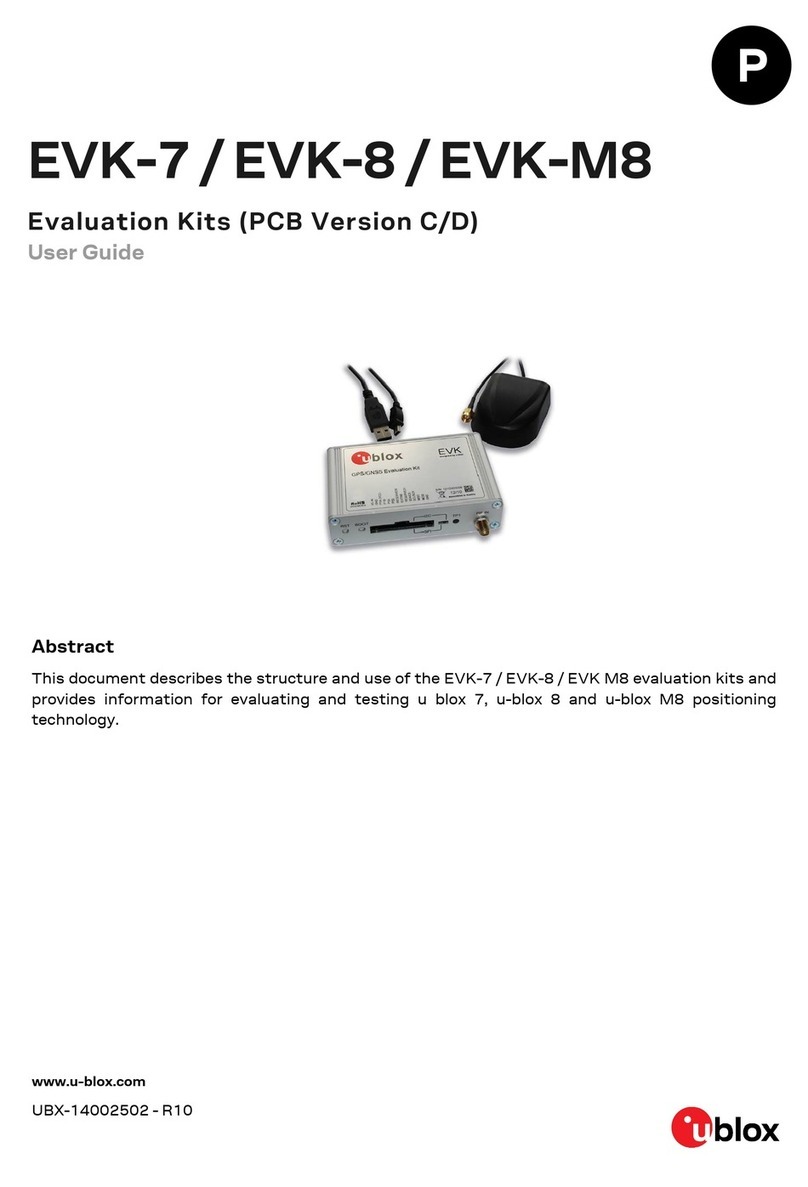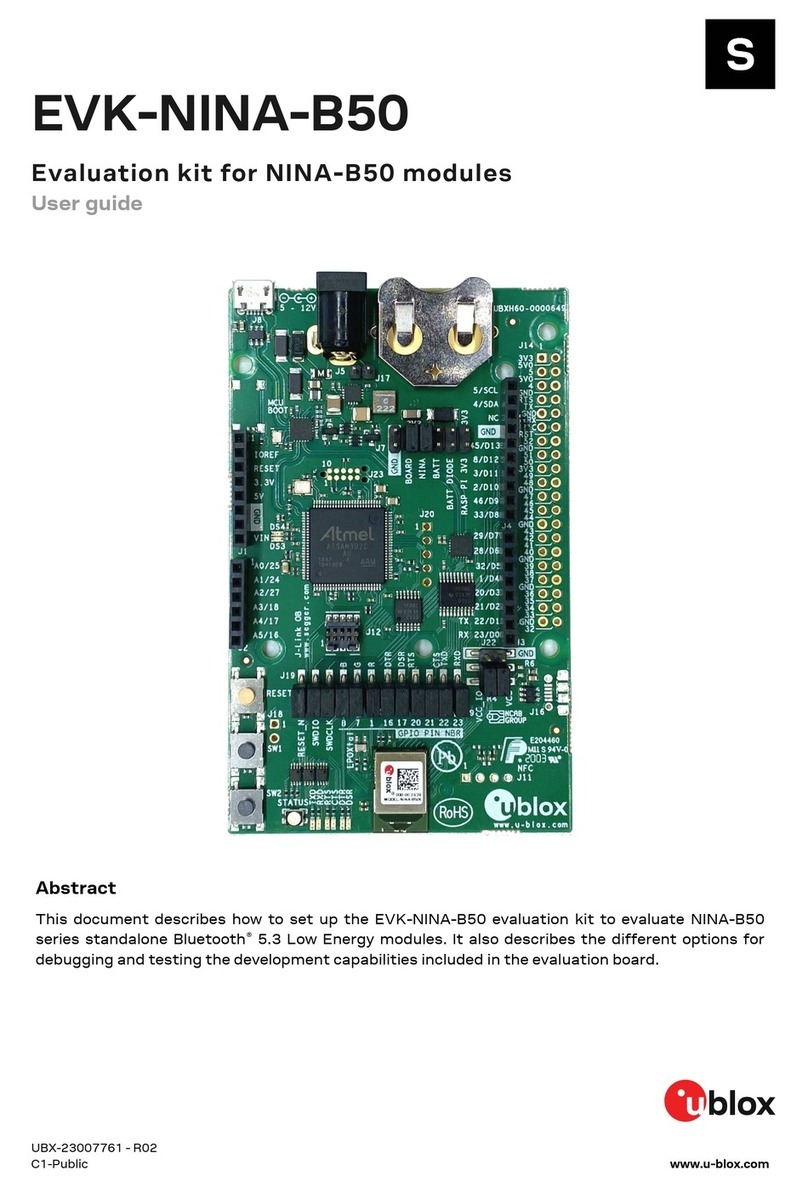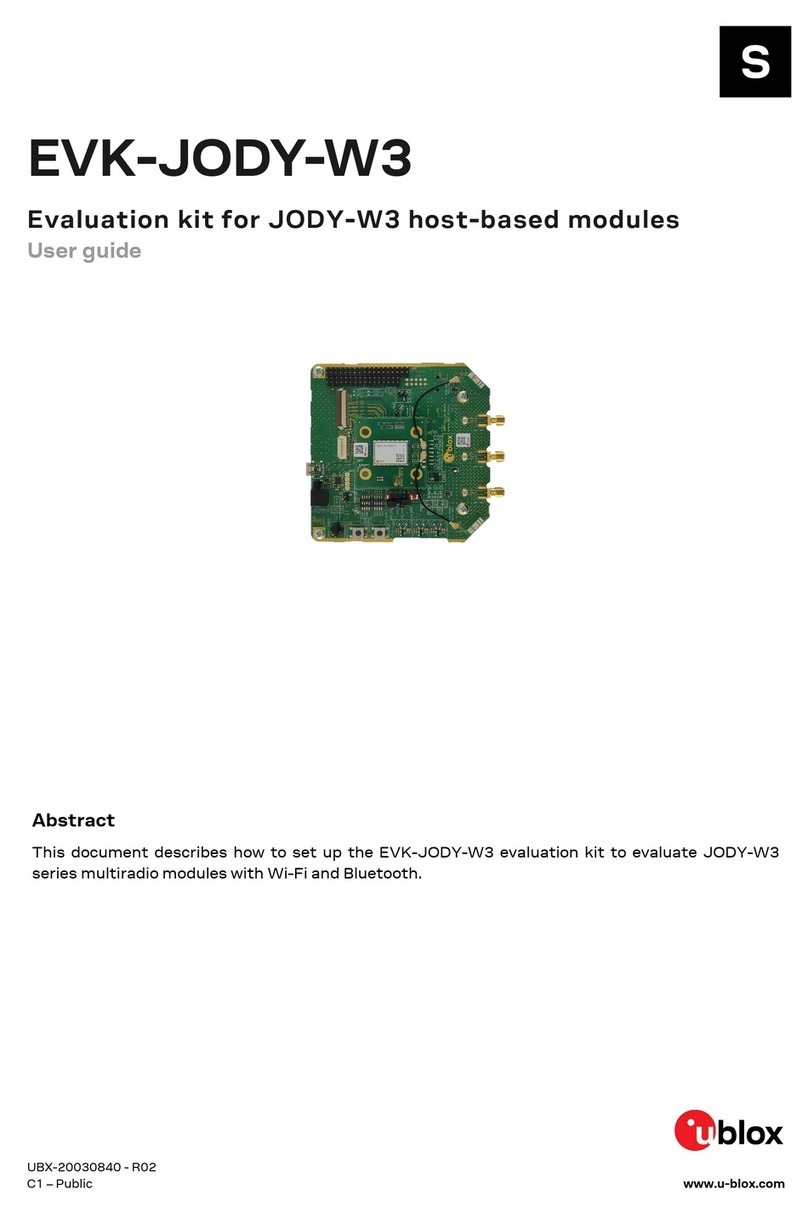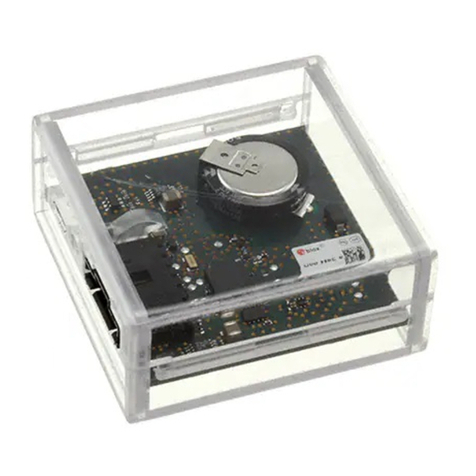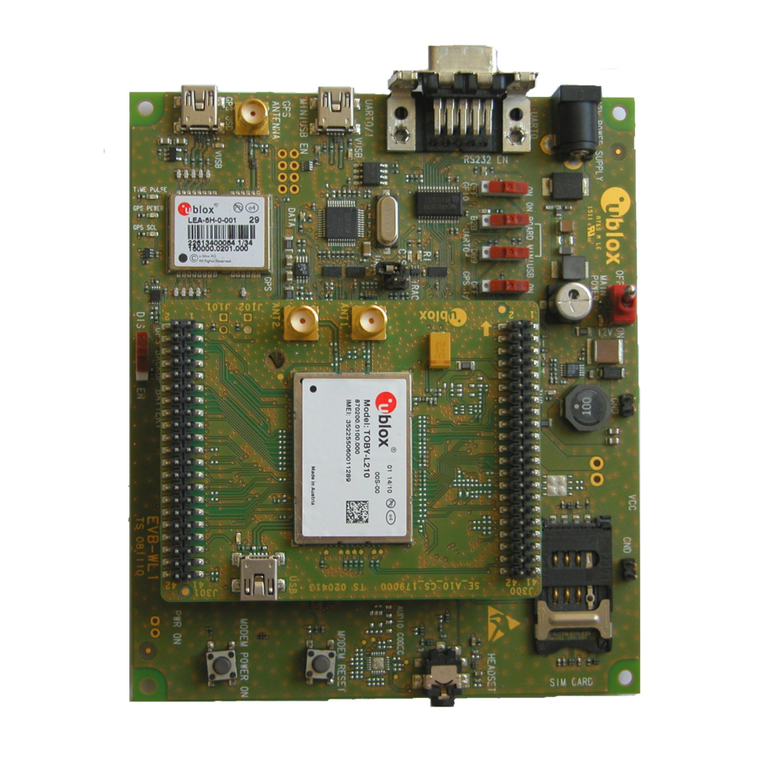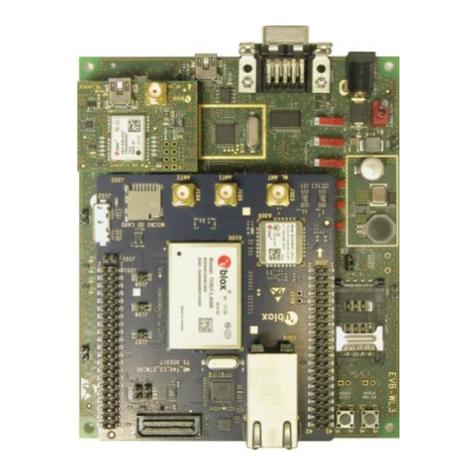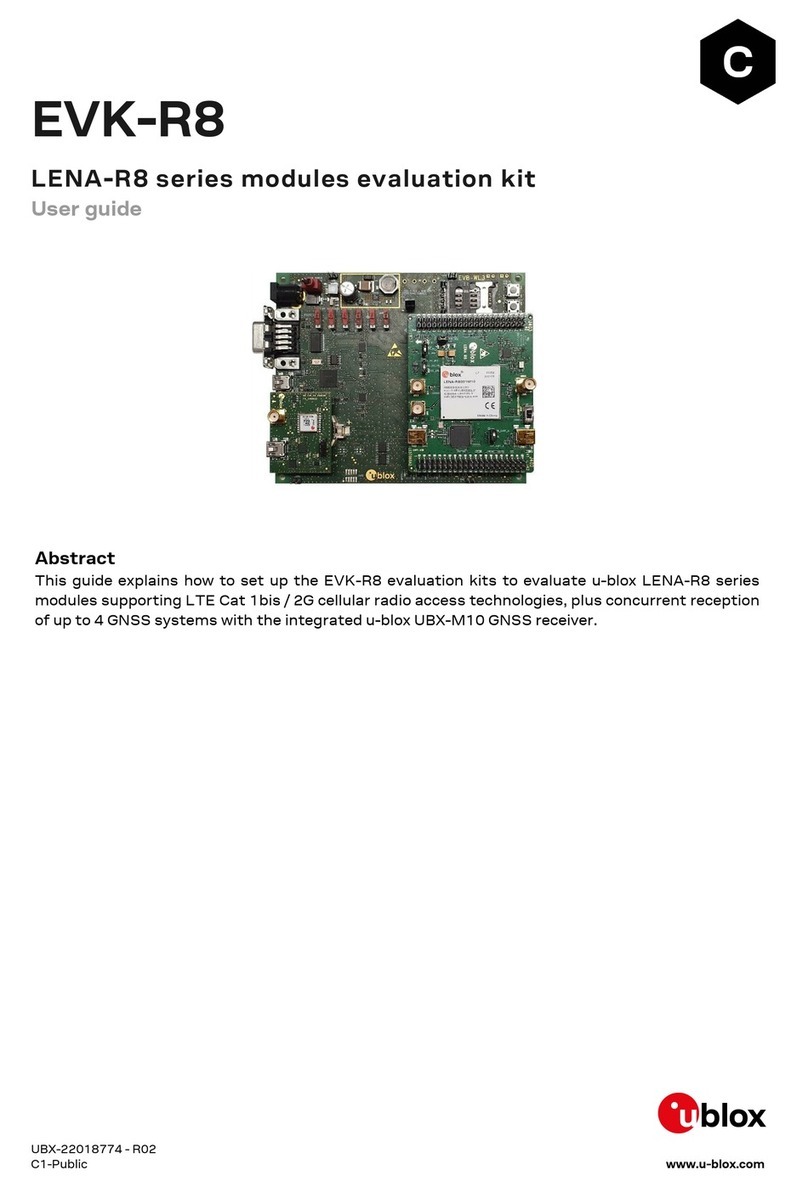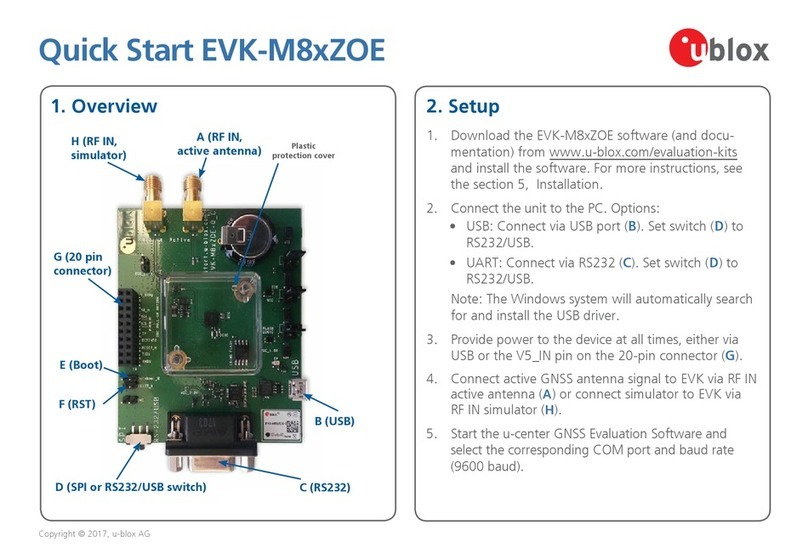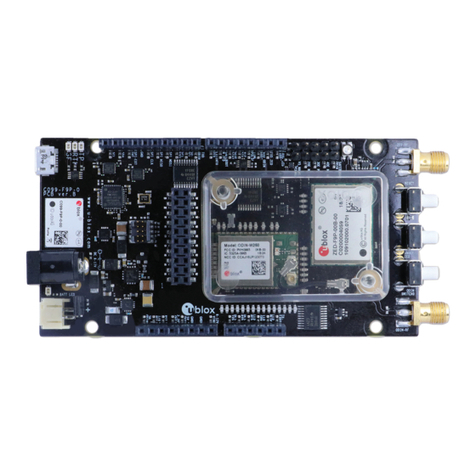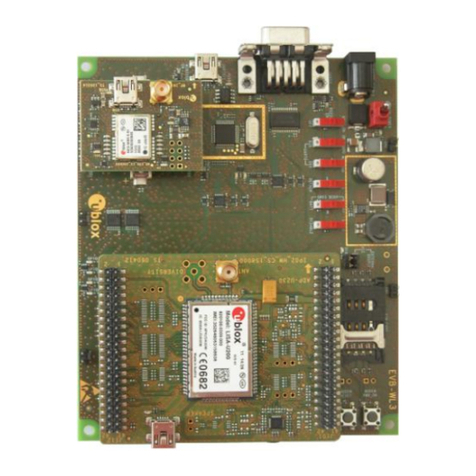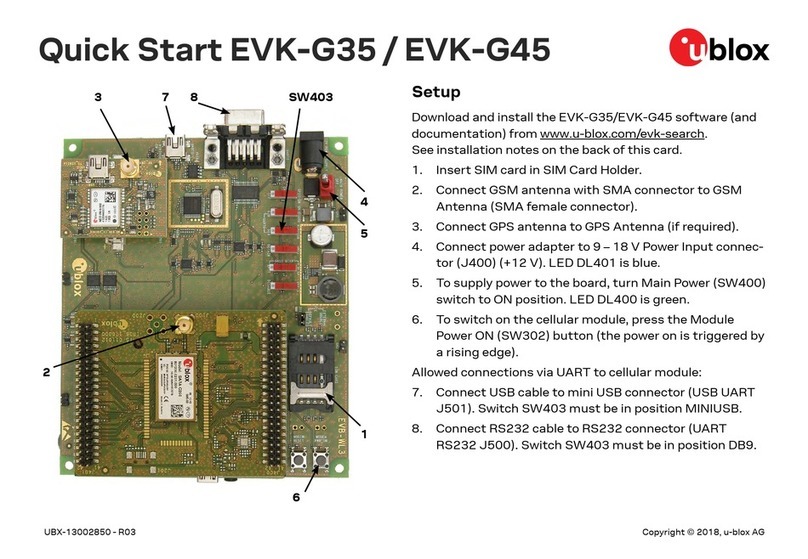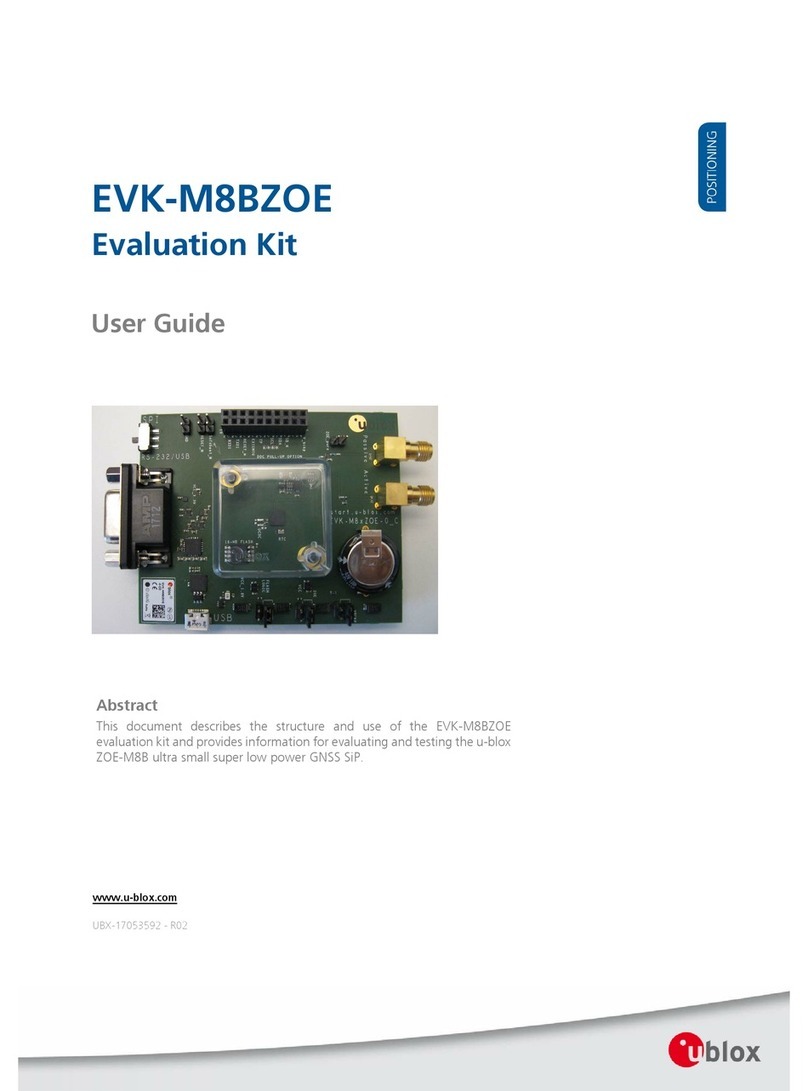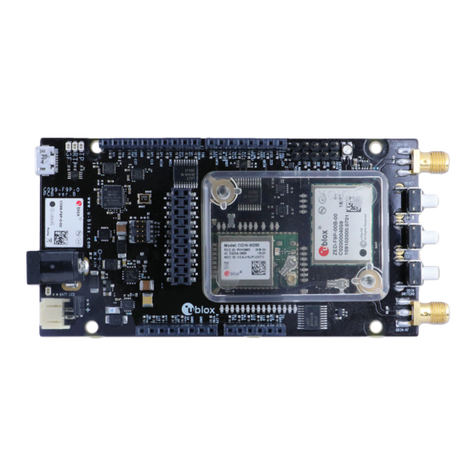EVK-JODY-W2 - User guide
UBX-19027118 - R06 Contents Page 3 of 25
C1 - Public
Contents
Document information................................................................................................................................2
Contents ..........................................................................................................................................................3
1Kit description ........................................................................................................................................4
1.1 Overview........................................................................................................................................................4
1.2 Kit includes ...................................................................................................................................................5
1.3 Software........................................................................................................................................................6
1.3.1 Driver source code .............................................................................................................................. 6
1.4 System requirements ................................................................................................................................7
1.5 Operating conditions..................................................................................................................................7
2Getting started.......................................................................................................................................8
2.1 Jumpers and connectors .......................................................................................................................... 8
2.2 EVK setup procedure.................................................................................................................................. 9
2.3 Host interface for Wi-Fi (1.8 V UHS) .......................................................................................................9
2.4 Host interface for Wi-Fi (3.3 V HS)........................................................................................................10
2.5 Host interface for Bluetooth...................................................................................................................11
3Board description................................................................................................................................ 12
3.1 Block diagram ............................................................................................................................................12
3.2 Jumper conventions.................................................................................................................................13
3.3 Power supply configuration ....................................................................................................................13
3.3.1 Selecting the EVB power supply ....................................................................................................15
3.3.2 Selecting the module input voltages ............................................................................................16
3.4 Bootstrapping............................................................................................................................................18
3.5 SDIO Interface............................................................................................................................................18
3.6 Bluetooth host interface..........................................................................................................................19
3.7 Bluetooth audio interface........................................................................................................................20
3.8 Control lines ...............................................................................................................................................21
3.9 Antenna interfaces...................................................................................................................................21
3.10 LEDs.............................................................................................................................................................22
3.11 Schematics.................................................................................................................................................23
Appendix ....................................................................................................................................................... 24
AGlossary ................................................................................................................................................. 24
Related documents ................................................................................................................................... 25
Revision history.......................................................................................................................................... 25
Contact.......................................................................................................................................................... 25
